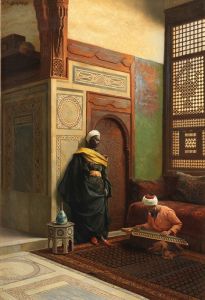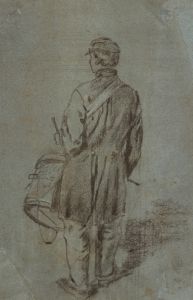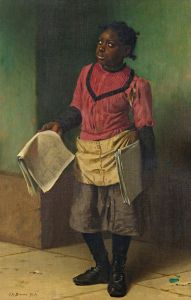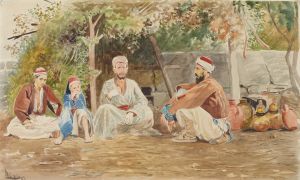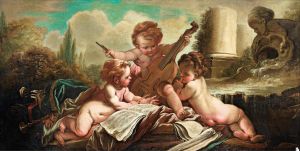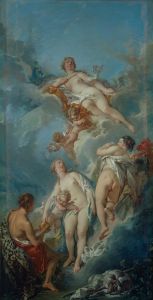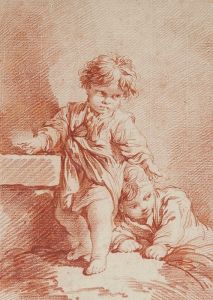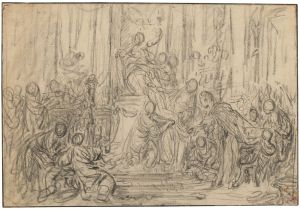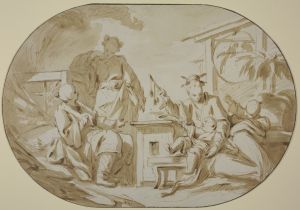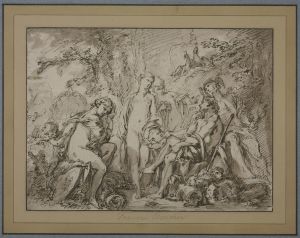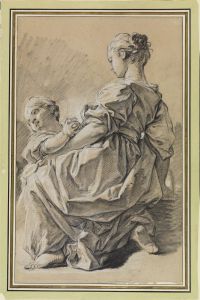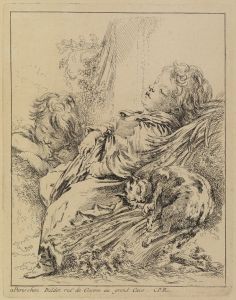
Chinese Musician
A hand-painted replica of François Boucher’s masterpiece Chinese Musician, meticulously crafted by professional artists to capture the true essence of the original. Each piece is created with museum-quality canvas and rare mineral pigments, carefully painted by experienced artists with delicate brushstrokes and rich, layered colors to perfectly recreate the texture of the original artwork. Unlike machine-printed reproductions, this hand-painted version brings the painting to life, infused with the artist’s emotions and skill in every stroke. Whether for personal collection or home decoration, it instantly elevates the artistic atmosphere of any space.
François Boucher, a prominent French painter of the Rococo period, is known for his idyllic and voluptuous paintings that often depict classical themes, pastoral scenes, and playful mythological subjects. One of his lesser-known works is "Chinese Musician," which reflects the 18th-century European fascination with Chinoiserie—a style that incorporates Chinese artistic influences into European art and design.
"Chinese Musician" is a painting that exemplifies Boucher's ability to blend European artistic techniques with exotic themes. During the 18th century, there was a growing interest in the cultures of Asia, fueled by increased trade and the exchange of goods and ideas between Europe and the East. This cultural exchange led to the popularity of Chinoiserie, which became a fashionable trend in European art and interior design.
In "Chinese Musician," Boucher captures the essence of this trend by depicting a figure dressed in what would have been perceived as traditional Chinese attire, playing a musical instrument. The painting is characterized by Boucher's signature style, which includes soft, delicate brushwork, a pastel color palette, and an emphasis on elegance and grace. The musician is often portrayed in a serene and contemplative pose, surrounded by elements that suggest an idealized version of an Eastern setting.
Boucher's work is notable for its decorative quality and attention to detail, which are evident in the intricate patterns of the musician's clothing and the carefully rendered background elements. The painting reflects the Rococo style's emphasis on ornamentation and beauty, as well as the period's interest in exploring and romanticizing foreign cultures.
The fascination with Chinoiserie during Boucher's time was part of a broader European trend that saw artists and designers incorporating Asian motifs into their work. This trend was not limited to painting but extended to architecture, furniture, and decorative arts. Boucher's "Chinese Musician" is a testament to this cultural phenomenon and highlights the ways in which European artists engaged with and interpreted Asian influences.
While Boucher's depiction of Chinese themes may not be historically accurate, it is important to understand it within the context of 18th-century European art. The painting is less about an authentic representation of Chinese culture and more about the European imagination and its interpretation of the exotic and unfamiliar.
Overall, "Chinese Musician" by François Boucher is a fascinating example of the cross-cultural exchanges that characterized the Rococo period. It showcases Boucher's skill as a painter and his ability to adapt and incorporate diverse influences into his work, creating a piece that is both visually appealing and culturally significant within the context of its time.





![Prosperity [Mr. Lionel Lawson]](/imgs/214446/s/james-tissot-prosperity-mr-lionel-lawson-8cd5fc08.jpg)
